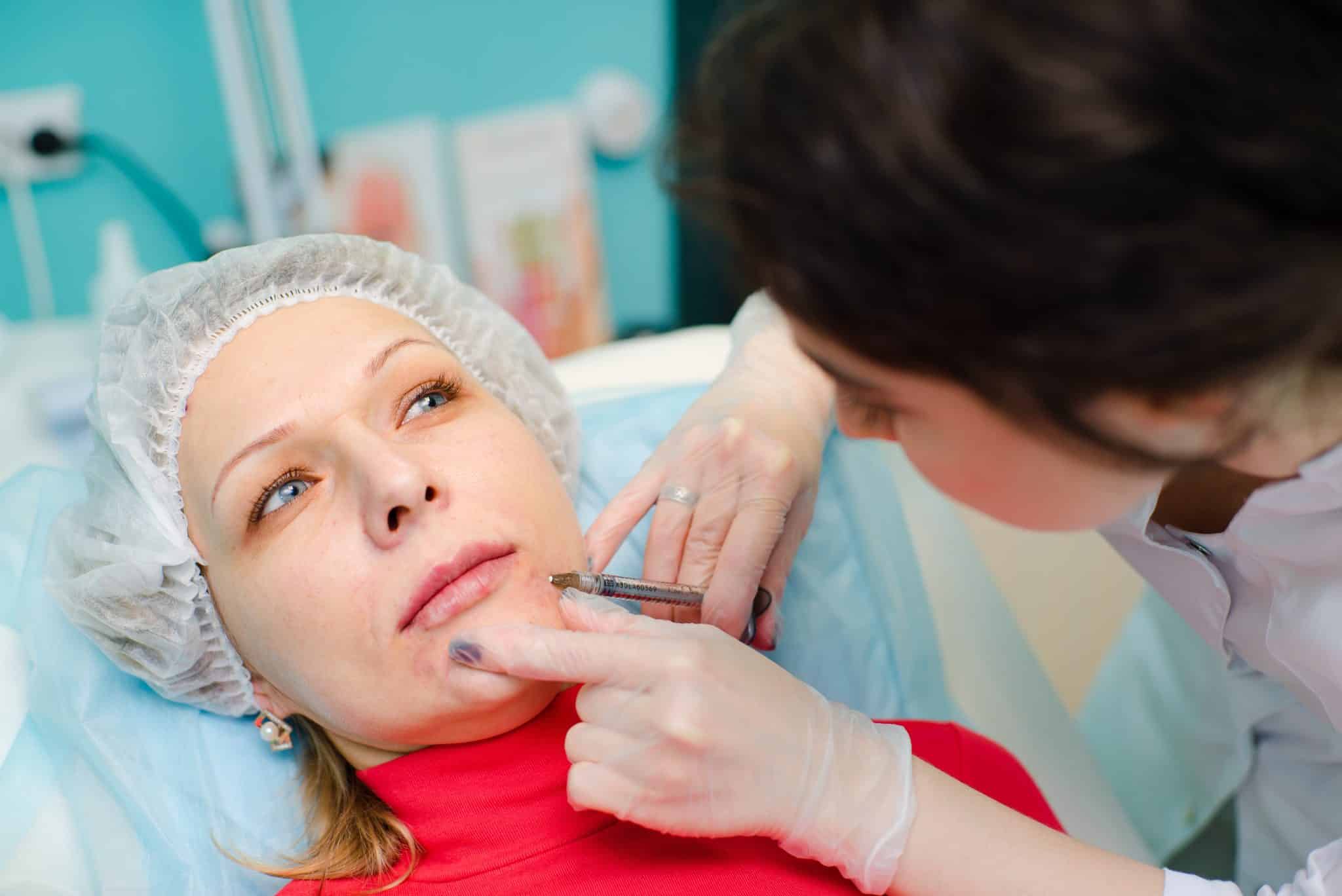Hyaluronic acid-based fillers are a type of dermal filler used to restore volume loss in the face – the most common names you may know them by are Restalyn and Juvederm.
Hyaluronic acid is a naturally occurring sugar in the body whose main purpose is to bind to water and provide hydration (which is why you find it so often in serums and gels for topical application) and lubrication (for optimal movement in joints and muscles). In fact, prior to its application in cosmetic settings, hyaluronic acid was primarily studied (and used) in orthopedic and ophthalmological settings!
Fun HA fact: one molecule of hyaluronic acid can hold up to one-thousand times its weight in water (see why it’s a hydration supermolecule?!).
Even though HA is found nearly everywhere in the body, the bulk of it is in our skin – about 50%, to be exact. Collagen, elastin, and HA are what contribute to plump, healthy skin – but it’s actually the HA that feeds the other two the hydration they need!
How do hyaluronic acid fillers help skin?
As we age, the body loses its ability to keep hyaluronic acid at the same concentration it once was – as HA levels decrease, so does firmness and overall hydration, which leads to an increase in wrinkles. By supporting the skin with hyaluronic acid filler injections, we restore the moisture necessary for youthful, firmer skin.
Hyaluronic acid provides moisture while also providing a space filler between all the collagen fibers already existing, which promotes the growth of new collagen – think of it like a scaffold of support for your body’s natural collagen to grow around. The result: more youthful, plump, and glowing skin!
How do we know HA is safe?
Hyaluronic acid was discovered in cow’s tissue in the 1930s but flew under the radar until the 1960s when scientists found HA in high concentrations of additional tissues throughout the body – specifically in relation to its role in tissue repair. By the 1980s, HA was being used to treat skin lesions, maintain moisture in the eyes during ophthalmological surgeries, and contribute to joint lubrication in orthopedic surgeries. In the late 1980s and early 1990s, HA was being used especially for athletes to recover from injuries faster!
The 1990s was when fillers started to boom (especially overseas), but 2003 is when the FDA officially approved the first hyaluronic acid filler. Regardless, we know that at this point, it’s been used for over 40 years in the body – with (usually) only positive (and at the worst, benign) effects.
What is hyaluronic acid best for?
Hyaluronic acid injections are best in places that were once plump but require a little more “oomph;”
- Fine lines around the mouth
- Nasolabial folds (the lines that look like parenthesis from your nose to the corners of your lips)
- Marionette lines (the lines that start at the corners of your lips and extend to the chin/jawline)
- Backs of hands (yep, it’s not just for the face!)
- Cheeks
- Eye bags and tear ducts
- Jawline
Hyaluronic acid fillers come in many viscosity types; for example, if you are wanting to plump up your under-eye bags, you want a more viscous solution so that your bags don’t end up being puffy or lumpy; conversely, if you’re seeking cheek or lip plumping, you want a “stiffer” gel for buoyancy and/or sculpting.
Aside from hyaluronic being naturally occurring in the body, it’s also one of the only fillers that is totally reversible! If you’re unhappy with the results, your doctor can inject hyaluronidase, an enzyme that nearly immediately breaks up all the hyaluronic acid (and it’s completely safe). That’s why HA is so popular as a recommendation among dermatologists and cosmetic doctors alike – it provides a “safe” space for filler experimentation to see if the patient will be satisfied with the appearance.
Keep in mind: HA injections last anywhere from 6 months to 2 years, depending on the brand/type used, and the person! Every body (and everybody’s skin) varies, so there is no way for your doctor to give you an exact window to how long they will last.
If you’re thinking of hyaluronic fillers – or any other kind – give us a call today at the Skin Cancer and Cosmetic Surgery Center of NJ (SCCSNJ)

